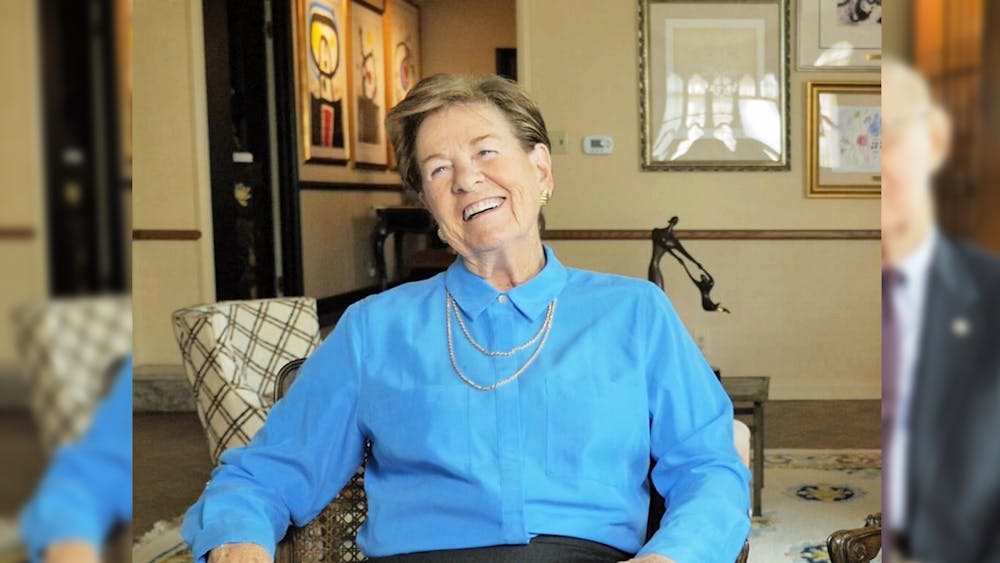Flash back to a scene of me in the shower of my excessively peach-colored bathroom in the fifth grade, singing to my loofah and wishing for the mysterious presence of a talent scout outside the door. \n(Well don’t really flash back, that’s gross. But try to pick up what I’m putting down here.)\nAnyways, the point of this story is not really about jailbait or my imaginary musical talent. It’s actually about what I was listening to and, more importantly, why. \nWhat: No Doubt’s third – and easily greatest – album, “Tragic Kingdom.” Why: because it made me feel like a badass. \nSomething about Gwen Stefani’s voice has always tickled my fancy, and that album marks the first time I remember actually feeling moved by a piece of music. I think it was “Just a Girl” that, in addition to boosting my wardrobe with an excess of gender equality themed T-shirts, truly made me feel sexy and powerful and musically stimulated all at once.\nThat being said, I hold a special place in my heart (and ears) (and … maybe a little down there as well) for Gwen Stefani and the state of musical consciousness she put me in at such a young age.\nIt’s now about 10 years later and, yes, I do know all the lyrics to “The Sweet Escape,” even including the fast-talking rap about sour milk and refrigerators. \nRecently, however, I’ve been grooving to her previous solo album, “Love. Angel. Music. Baby.” With the release of this album, Gwen also ushered in an entourage of four girls from the Harajuku Station area of Tokyo, cleverly labeled as her “Harajuku Girls.” \nGwen’s 2005 Harajuku Lovers Tour caused a lot of controversy for these girls, who were rumored to be under contractual obligation to only speak Japanese in public. Although Margaret Cho, an incredibly funny Asian-American comedian, criticized this as a ‘minstrel show’ in her blog, there is another issue at hand here.\nIn one of my classes we have been discussing Japanese street fashion and the concept of “Lolitas.” Lolita fashion is a considerably elaborate concept, and attempting to define it is like attempting to define ‘Sanjaya.’ Just impossible. But alas! I’ll let Wikipedia do it for me! Because, as Michael from “The Office” says, “Wikipedia: Anyone in the world can write anything they want about any subject, so you know you are getting the best possible information.”\nWikipedia says, “Lolita fashion is part of the fashion style and subculture Gothic & Lolita, which originated in Japan, largely inspired by Victorian children’s clothing and the elaborate costumes of the Rococo period.” Basically, Japanese girls (and guys) spend thousands on costume-like clothing that portrays them as young and innocent (ruffles, lace and conservatism aplenty). Now this subculture has grown to include many variations, from punk Lolita to sweet Lolita. \nThe issue with Gwen arises because she often dresses up her Harajuku girls in a modified (sluttier) version of Lolita fashion, with a little more chest action and some definitely shorter skirts. And if this particular sect of fashion is centered around innocence, is it wrong of Gwen to steal their look and adjust it to fit America’s whorish standards?\nQuite simply, no. There’s no reason for people to get their panties in a bunch; it’s not like she ripped up the Japanese flag and made them into boobie tassels. \nBesides, didn’t Lolita fashion steal from Victorian culture and French Rococo in the first place?\nEverything in fashion is essentially a modified version of something else. There are no actual new trends so much as there are new blends.\nSo I say to Gwen: more power to you, sister. And, although there were so many song puns to choose from, I really love you underneath it all.
Gwen’s not-so-tragic Kingdom
Get stories like this in your inbox
Subscribe





